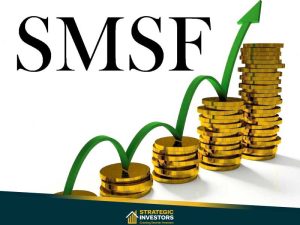
Self Managed Superannuation Funds, also known as SMSF’s, have gained increasing popularity among those who are looking to invest in property. Using your superannuation funds to purchase property gives you access to a myriad of benefits inc wealth creation, tax concessions and asset protection.
SMSF’s offer flexibility and control over your own investments. However, setting up an SMSF should be done with due diligence as with any undertaking involving a large amount of your hard-earned money.
This ebook will aid you in your journey into SMSF’s and property investment by pointing out the common mistakes investors may encounter and offering solutions to make the process as easy as possible.
We have compiled these ten (10) common mistakes investors make when buying property via SMSF as guidelines for those who choose to take this path.
MISTAKE NUMBER 1
Failing To Get Services From An Smsf Expert

The services of a financial consultant specialising in SMSF transactions would prove to be a prudent choice in the long run as you minimise- if not eliminate altogether- wasting time, effort and money by helping you every step of the way in property investment through SMSF.
MISTAKE NUMBER 2
Miscalculating Finding Demands During Retirement Period

MISTAKE NUMBER 3
Substantial Alteration of the original Asset Turning it into a Replacement Asset

ATO presents several examples of what not to do:
- Construction of a house on a vacant land lot
- Transformation of a house into a commercial unit necessitating the rezoning of the land where the house is built upon
- Subdivision of a single-titled land lot into individually-titled smaller plots
- Demolition of a house replaced with three strata title units
These examples are not considered improvements, somewhat, the asset has been sufficiently changed and is considered a replacement asset.
Replacement assets are precedents to non-compliance to SMSF guidelines by the ATO and must be prevented at all costs.
MISTAKE NUMBER 4
Non-compliance to the Governing Rules between Improvements and Maintenance

Once again, it would be prudent to seek an expert’s opinion prior to finalising decisions for maintenance and/or improvements.
MISTAKE NUMBER 5
Poor Implementation of Rules on ‘Single Acquired Assets’

In the same ruling, ATO cites these examples to further illustrate the rules in defining this type of asset:
- Two adjacent blocks of land
Despite the absence of a physical impediment between two adjacent properties, two blocks of land cannot be considered as a single acquirable asset, although the blocks of land may be acquired under separate Limited Recourse Borrowing Arrangements (LRBA’s)
- A factory complex on more than one title
A multi-titled factory complex could be considered a single acquirable asset since the factory adds considerable value to the land and, therefore, the asset.
- Farmland with multiple titles
The different parts of the farmland could still be used for varying farming activities. Therefore, it could not be considered as a single acquirable asset.
The intricacy of the single acquirable asset clearly necessitates professional advice to guarantee adherence to ATO rulings.
MISTAKE NUMBER 6
Improper Set-up of SMSF and its Trust in Loan Arrangements

Below are examples of incorrect or problematic loan arrangements:
- The SMSF is the buyer in the deed of sale. This is in breach of the loan arrangement where the security trust is the holding entity, therefore, should act as the buyer.
- The security trust has active duties. In the above diagram, it can be ascertained that the security trusts acts as a holding entity for the title deeds of assets. The trust’s actions must be simple and restricted so as to avoid trusts being considered as an ‘active entity’ for tax purposes.
- The lender acts as a trustee. Clearly, this conflict of interest may be questionable to the ATO.
- The security trust directly initiates the loan arrangement with the lender.
MISTAKE NUMBER 7
Considering SMSF Property Purchases as ‘Regular Transactions’

MISTAKE NUMBER 8
Insufficient Knowledge of Lending Requirements

MISTAKE NUMBER 9
Purchasing Property When SMSF is Not Yet Finalised

MISTAKE NUMBER 10
Non-Compliance with Rules on Relationship with related Parties

“Lend to, invest in or lease to a related party of the fund (including related trusts), more than 5% of the fund’s total assets.”
CONCLUSION
Purchasing Property When Smsf Is Not Yet Finalised

Good luck and happy investing.
‘Tell me, and I forget, teach me, and I may remember, involve me, and I learn.” –
Benjamin Franklin
Disclaimer
The information contained in the ebook is presented for illustrative and educational purposes only. It is not presented, nor should it be treated as real estate advice, legal advice, investment advice, or tax advice. Any investment involves risk and potential loss of money. If you require advice in any of these fields, we urge you to contact a suitably qualified professional to assist and advise you. Your personal individual financial circumstances must be taken into account before you make any investment decision.
Strategic Investors, its author(s), its authorised distributors and licensees, their employees and speakers do not guarantee your past, present or future investment results whether based on this information or otherwise. The information supplied is accurate at the time of press but is always subject to alteration without notice. Strategic Investors and their authorised distributors, licensees, associates and employees may hold shares and/or obtain fees and/or other benefits from the companies presented and promoted. All reasonable care has been taken in the preparation of the information. To the best of our knowledge, no relevant information has been omitted. However, Strategic Investors and their affiliated companies disclaim all liability should any information or matter in this document differ. Strategic Investors disclaims all liability for clients’ purchase decisions. Photographs are illustrative only.












